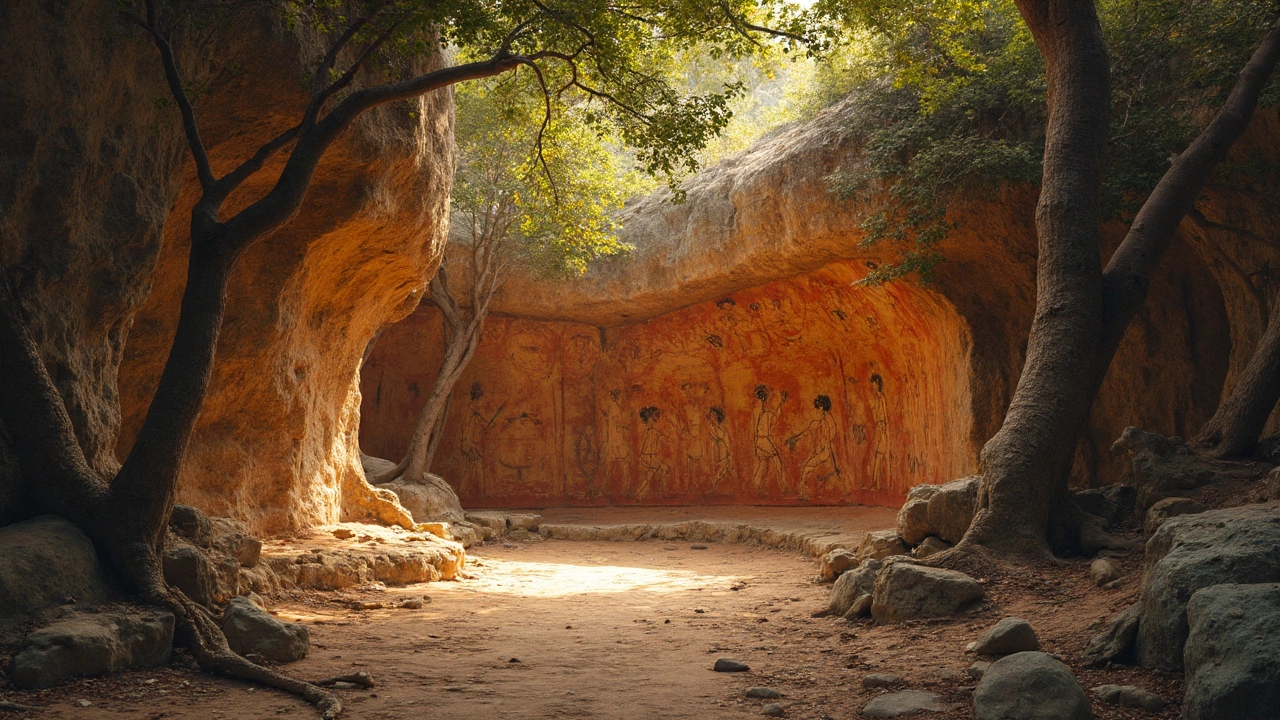Bhimbetka: Ancient Rock Shelters and India’s Oldest Human Stories
When you think of ancient India, you might picture temples or Sanskrit texts—but Bhimbetka, a cluster of rock shelters in Madhya Pradesh holding some of the earliest known human paintings in the world. Also known as Bhimbetka rock shelters, this UNESCO World Heritage site isn’t just a collection of caves—it’s a timeline drawn in ochre, charcoal, and white lime, stretching back over 30,000 years. These aren’t decorative murals. They’re records. They show hunters chasing deer, women dancing, children playing, and even early forms of warfare. This is where humans first told stories not with words, but with images—long before writing existed.
Bhimbetka connects directly to other ancient Indian traditions you might know. The rock art here shares themes with later Indian folk art: movement, rhythm, animals as spiritual symbols, and communal rituals. You’ll see parallels in Tamil Karakattam, a traditional dance performed with pots balanced on the head, often tied to temple festivals and nature worship, where bodies become moving symbols, just like the figures in Bhimbetka’s paintings. Even the use of natural pigments—red from iron oxide, white from chalk—echoes in the dyes used in rural Indian textiles and ritual body art across South India. And while Bhimbetka predates Hinduism by tens of thousands of years, the reverence for animals, the focus on cycles of life and death, and the role of communal gathering in these paintings feel deeply familiar to anyone who’s seen Diwali lamps lit or Holi colors flown.
What makes Bhimbetka so powerful is how little we still know. Archaeologists have mapped over 700 shelters, but only a fraction have been fully studied. Some paintings show elephants with what look like harnesses—were these early domestication attempts? Others show figures with headdresses that resemble tribal masks still used in Theru Koothu, a traditional Tamil folk theatre form that blends dance, music, and myth in open-air performances. The connection isn’t direct, but the spirit is: storytelling as survival, memory as identity. These aren’t just ancient art. They’re the first evidence of human curiosity, emotion, and the need to leave something behind.
What you’ll find in the posts below isn’t a list of facts about Bhimbetka—it’s a collection of stories that circle around it. Articles on Indian folklore, ancient rituals, folk music, and regional traditions all tie back to the same human impulse: to express, remember, and belong. Whether it’s the nonsense singing of rural India or the blue skin of Hindu gods, you’re seeing echoes of the same minds that painted those walls in Bhimbetka. This is where culture began—not in temples or texts, but in the quiet spaces between the rocks, under open skies, with hands stained in earth.
